Introduction
What To Feed A Baby Robin: Feeding a baby robin is a delicate and crucial task, especially when you come across a nestling or fledgling that needs assistance. In this exploration, we will discuss the essential guidelines and considerations for providing appropriate nourishment to these young birds. Understanding what to feed a baby robin is essential to ensure their survival and growth, as well as to respect the laws and regulations regarding the care of wild birds.
As we delve further into what to feed a baby robin, we will explore the specific dietary needs of these young birds at different stages of their development. We will also discuss the importance of seeking professional guidance when necessary, as well as the ethical and legal aspects of caring for wild birds. Providing the right nutrition to baby robins is not only a compassionate act but also a crucial step in their journey to becoming strong and self-sufficient members of the avian community.
Further exploration into what to feed a baby robin will allow us to understand the different stages of their growth and how their dietary needs evolve. We can also discuss alternative feeding methods and considerations for their successful rehabilitation and eventual release back into the wild. Caring for baby robins is a rewarding endeavor that requires knowledge, patience, and a deep commitment to their well-being.
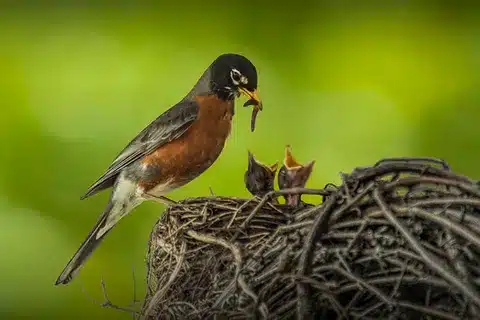
How do you take care of a baby robin?
Your baby should be fed as much and as often as he likes, but now he should also be kept outside, loose, as much as possible. He will make exploratory flights away, but will come back for feeding. He will figure out a lot about food all by himself.
Taking care of a baby robin requires careful attention, knowledge, and adherence to certain guidelines to ensure their well-being and successful transition to adulthood:
Determining the Situation: First, assess the situation. If you find a baby robin out of the nest and it’s not injured, observe it from a distance to see if its parents are nearby. Often, parents continue to feed and care for fledglings on the ground.
Keep Disturbance Minimal: If you must handle the bird, do so gently and minimally. Always wash your hands before and after handling to prevent contamination.
Providing Heat: If the bird appears cold or is a nestling (featherless or with only pin feathers), keep it warm using a heating pad set on low or a warm water bottle wrapped in a cloth. Ensure the bird has room to move away from the heat source if it gets too warm.
Feeding: Consult a wildlife rehabilitator or avian expert for advice on feeding, as the diet of baby robins changes as they grow. Initially, they require insects or a specially formulated baby bird diet.
Hydration: If advised, provide water in a shallow dish with small rocks or marbles to prevent drowning.
Contact a Professional: The best course of action is to contact a local wildlife rehabilitator or a professional avian expert for guidance. They have the expertise and resources to provide appropriate care and ensure the bird’s best chance of survival.
Release: Once the baby robin is ready, it should be released in a suitable location where its parents can find and continue caring for it if needed.
What can I feed a little robin?
Robins feed on insects (especially beetles) and worms. You might notice one following you about as you dig up your garden hoping to nab a few worms as you unearth them. Robins can also eat fruit, seeds, suet, crushed peanuts, sunflower hearts and raisins. They particularly enjoy mealworms.
Feeding a young robin, whether it’s a nestling or a fledgling, requires careful consideration of their dietary needs as they grow and develop:
Nestlings (0-14 Days Old): Nestlings are typically featherless or have only pin feathers. At this stage, their diet primarily consists of soft, easily digestible foods like insects. You can provide them with small, soft insects like mealworms or crickets. Soaking these insects briefly in water can make them easier to swallow. Ensure they are cut into appropriate-sized pieces.
Fledglings (14 Days and Older): Fledglings have more feathers and are often seen hopping on the ground but are still dependent on their parents for food. If you find a fledgling, you can offer it a variety of soft foods, including small bits of fruits (e.g., berries), chopped earthworms, and soaked dry cat food. Be sure to provide fresh water as well.
Avoid Common Pitfalls: Do not feed baby robins bread or cow’s milk, as these can be harmful to their digestive system. It’s essential to mimic their natural diet as closely as possible.
Consult a Professional: If you’re unsure about what to feed a young robin or its specific dietary needs, it’s best to contact a local wildlife rehabilitator or avian expert. They can offer guidance and ensure that you’re providing the appropriate nutrition for the bird’s age and condition.
Can you feed baby robins milk?
If you get them live, you’ll need to snip the head off them before feeding to the bird, but most pet stores sell frozen mealworms too (thaw them out as needed). Definitely NO milk – that is poisonous to young birds.
No, you should not feed baby robins or any baby birds cow’s milk. Baby birds, including robins, have very different dietary requirements than mammals, and cow’s milk is not suitable for their digestive systems. Here’s why:
Lactose Intolerance: Birds lack the enzyme lactase, which is needed to digest lactose, the sugar found in milk. Feeding them milk can lead to digestive problems, including diarrhea, dehydration, and malnutrition.
Nutritional Deficiency: Cow’s milk does not provide the essential nutrients and proteins that young birds need for proper growth and development. Baby birds require a diet rich in proteins, vitamins, and minerals, typically obtained from insects, worms, or specially formulated bird formulas.
Impact on Development: Offering cow’s milk to baby robins can hinder their development and weaken their immune system, making them more vulnerable to illness and less likely to survive.
How long does a robin feed her babies?
Caring for baby robins usually requires around 13 days in the nest and several more days after they leave or fledge. Both parents feed the young.
The duration during which a female robin feeds her babies can vary depending on several factors, including the age of the nestlings and the stage of development. Here’s a general overview:
Nestling Stage (0-14 Days): During the nestling stage, which typically lasts around 9-16 days, the mother robin and sometimes the father are responsible for feeding their offspring. They make frequent trips to the nest throughout the day, delivering small, soft insects and worms to their hungry nestlings. This stage is crucial for the rapid growth and development of the young birds.
Fledgling Stage (14-16 Days and Older): As the nestlings reach the fledgling stage, they become more active and demanding. At this point, they may leave the nest and perch nearby while still relying on their parents for food. The parents continue to feed and care for their fledglings during this transitional phase.
Transition to Independence: Eventually, the fledglings become more independent and start to forage for their food. The parents gradually reduce their feeding efforts as the young robins learn to find their own food.
What fruits can baby robins eat?
Cut up fruit and berries, such as strawberries, apples and blueberries. The robins may wish to consume these fruits and berries later in the day near the end of its feeding time. Place these items on the ground and allow the bird to feed.
Baby robins, like adult robins, can consume a variety of fruits, but their diet primarily consists of insects and worms during their early stages of development. Here’s what you need to know about offering fruits to baby robins:
Limited Fruit Consumption: Baby robins have specific dietary requirements, and their primary food source should be protein-rich insects and worms, which provide essential nutrients for their rapid growth.
Introducing Fruits: While baby robins may occasionally consume small fruit pieces if offered by their parents or caretaker birds, this should be a small part of their diet, and it’s not typically provided until they are older.
Age Matters: Baby robins typically leave the nest when they are fledglings, around 14-16 days old. At this stage, they have a more advanced digestive system and can begin to explore a broader range of foods, including soft fruits like berries.
Soft and Small Pieces: If you want to offer fruits to baby robins, ensure that the fruit is ripe and soft. Cut the fruit into tiny, manageable pieces to prevent choking hazards.
Supervised Introduction: The introduction of fruits to fledgling robins should be supervised, and it’s essential not to force-feed them. Observe their willingness to explore and consume these foods.
Consult an Expert: If you are caring for a baby robin, it’s advisable to consult a local wildlife rehabilitator or avian expert for guidance on their diet and care, as their nutritional needs can vary based on their age and condition.
What is the survival rate of baby robins?
Only 25 percent of those fledged young survive to November. From that point on, about half of the robins alive in any year will make it to the next. Despite the fact that a lucky robin can live to be 14 years old, the entire population turns over on average every six years.
The survival rate of baby robins can vary significantly depending on various factors, including environmental conditions, predation risks, and human intervention. Here are some key points regarding the survival rate of baby robins:
Nestling Stage: During the nestling stage (the first 9-16 days of life), baby robins are most vulnerable. Mortality rates can be relatively high due to factors such as harsh weather, nest predation by squirrels or other birds, and accidents.
Fledgling Stage: After leaving the nest as fledglings, young robins are still dependent on their parents for food and protection. This stage also carries risks, including exposure to predators, accidents, and a learning curve as they adapt to their new environment. Survival rates can be variable at this stage.
Parental Care: The survival rate is significantly influenced by the care provided by the adult robins. Diligent parents who provide consistent food, protection, and guidance can increase the chances of their young surviving to adulthood.
Human Intervention: Well-meaning human intervention can sometimes harm baby robins unintentionally. It’s crucial to seek expert advice from wildlife rehabilitators or avian experts when encountering baby robins in distress, as improper care can lower their survival prospects.
Population Factors: The overall survival rate of baby robins also depends on regional and population factors. Robins are a common bird species, and their populations are generally stable. However, local conditions and threats can impact survival rates in specific areas.
Who feeds robin babies?
Both parents feed the babies. A robin might make 100 feeding visits to its nest each day. There’s no time to go far on a food hunt. That’s why a good territory is important to robins in spring.
Robin babies, also known as nestlings, are entirely dependent on their parents for feeding and care during their early stages of life. Both the male and female adult robins share the responsibilities of feeding their young:
Nestling Diet: Baby robins have a high demand for food, primarily insects and worms, which provide the protein and nutrients needed for their rapid growth. The parents diligently hunt for these food sources to nourish their hungry nestlings.
Feeding Frequency: Adult robins make frequent trips to the nest throughout the day, delivering small, soft insects and worms to their offspring. They work tirelessly to meet the nestlings’ constant demands for food.
Parental Cooperation: The male and female robins work as a team in feeding their young. They take turns foraging and feeding, ensuring that the nestlings receive a steady supply of nutrition.
Parental Instinct: The instinct to care for their young is strong in adult robins. They are highly attentive to the needs of their nestlings, monitoring them closely and providing protection from potential threats.
Transition to Independence: As the nestlings grow and develop, they become more active and demanding. Eventually, they reach the fledgling stage and leave the nest. Even after leaving the nest, young robins continue to receive care and food from their parents for some time until they become fully independent.
Do newborn robins sleep?
Mom and dad still help feed them. The babies now sleep at night on a tree branch with dad. Mom will soon be sitting on new eggs for her next brood. The babies are good fliers just 10-15 days after fledging.
Newborn robins, also known as nestlings, do indeed sleep. Sleep is essential for the growth and development of young birds, as it allows their bodies to rest and recover. Here are some key points about the sleep patterns of newborn robins:
Sleep Cycles: Nestlings have shorter sleep cycles than adult birds. They typically alternate between periods of activity, feeding, and rest. These sleep cycles are essential for their growth and energy conservation.
Nest Environment: Nestlings sleep in their nests, which provide a safe and sheltered environment. The nest offers protection from predators, adverse weather conditions, and other potential dangers.
Parental Care: While nestlings are resting or sleeping, their parents continue to watch over them, ensuring their safety and providing for their needs. The parents also help regulate the temperature in the nest, keeping their young comfortable.
Sleep Duration: The sleep duration and frequency of nestlings can vary depending on their age and development. As they grow and their bodies require more energy for growth, they may spend more time sleeping.
Growth and Development: Sleep plays a crucial role in the development of nestlings’ bodies and organs. It is during these rest periods that their bodies can allocate resources to growth and the maturation of feathers.
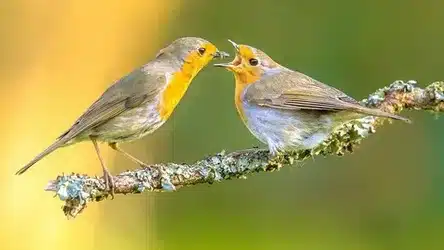
Conclusion
Providing appropriate nourishment for baby robins is a vital responsibility, whether you come across nestlings or fledglings in need. Understanding their dietary needs at various stages of development and seeking professional guidance when necessary is crucial. Caring for these young birds requires patience, knowledge, and a deep commitment to their well-being, ultimately increasing their chances of thriving and contributing to the avian community.
Caring for baby robins is a rewarding but challenging task that demands careful attention and dedication. It’s essential to follow guidelines for their dietary needs, considering their growth stages, and respecting legal regulations regarding wild bird care. Additionally, ensuring they have a safe and appropriate environment to grow and develop is crucial. Further exploration into the intricacies of caring for baby robins can provide valuable insights into the fascinating world of avian rehabilitation and conservation efforts.
As we continue to explore the topic of caring for baby robins, it’s essential to emphasize the significance of their early care and the positive impact it can have on their survival. Learning to provide the right nutrition and creating a nurturing environment is not only fulfilling but also contributes to the conservation of these beloved birds. The journey of caring for baby robins is a testament to our responsibility in preserving wildlife and ensuring that future generations can appreciate the beauty of these feathered friends.


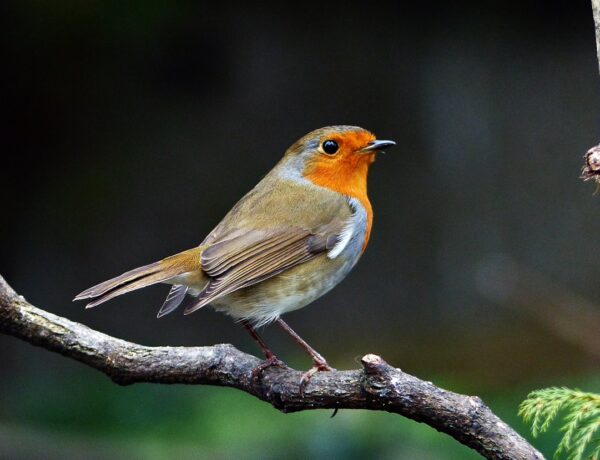
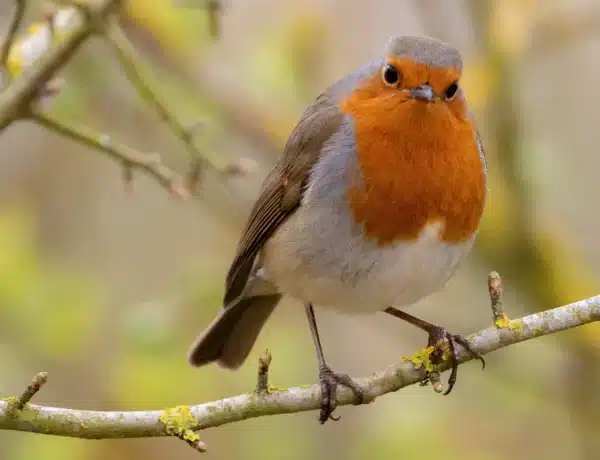
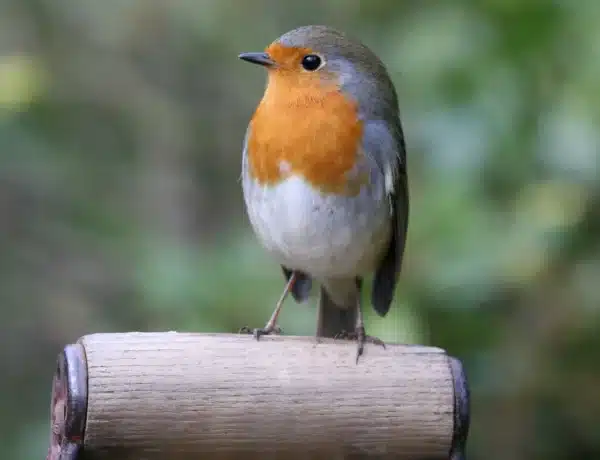
No Comments